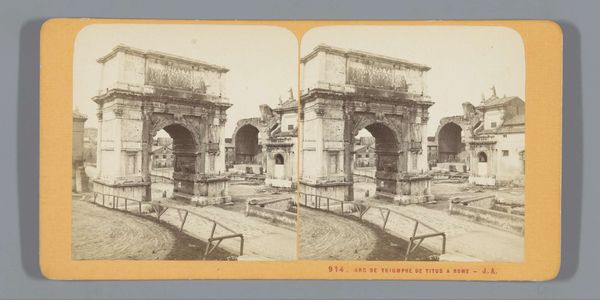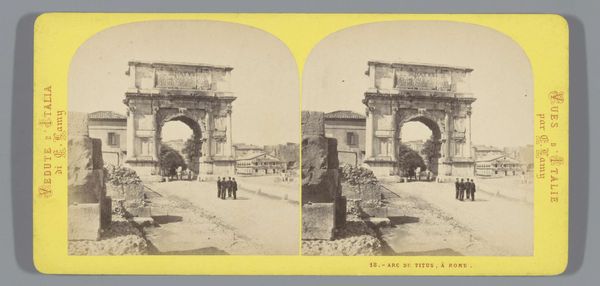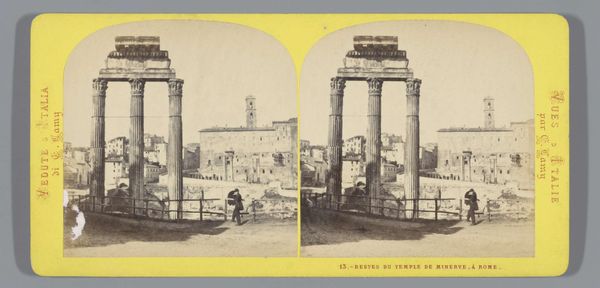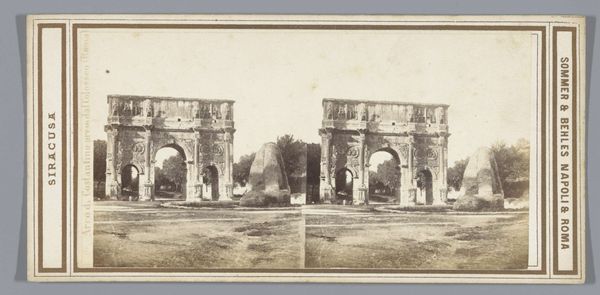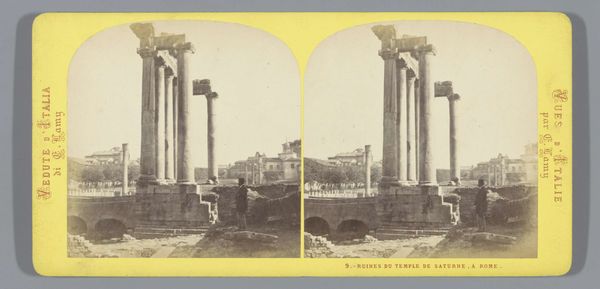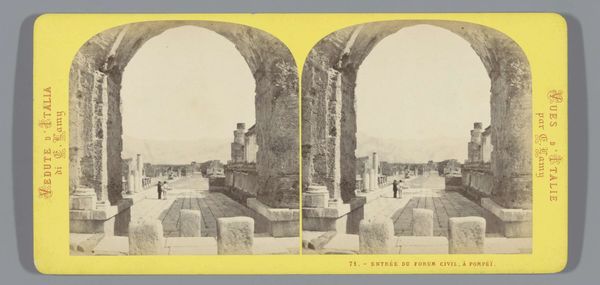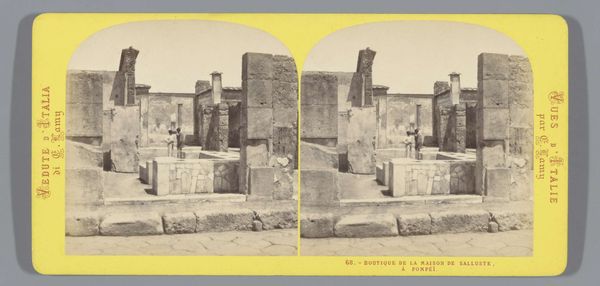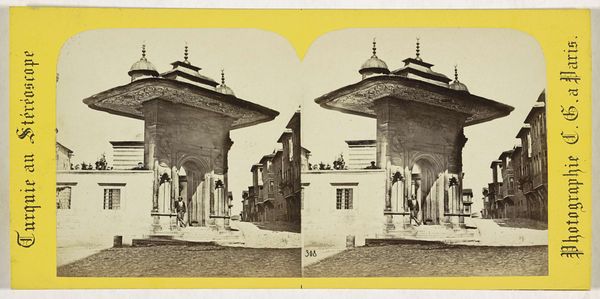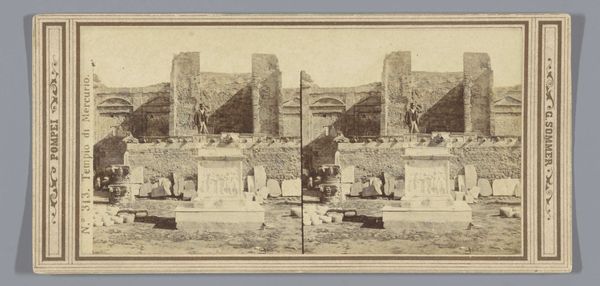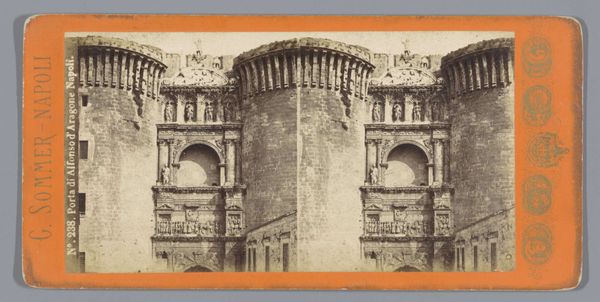
print, photography
# print
#
greek-and-roman-art
#
landscape
#
photography
#
coloured pencil
#
cityscape
Dimensions: height 87 mm, width 178 mm
Copyright: Rijks Museum: Open Domain
Editor: We're looking at a stereo photograph from between 1861 and 1878 by Ernest Eléonor Pierre Lamy, titled "Arch of Constantine, Rome." It has this sepia-toned, almost ethereal quality. The stark geometry of the arch really contrasts with the blurred figures at its base. What strikes you when you look at it? Curator: Formally, the image presents a study in contrasts: light and shadow, the rigid structure of the arch versus the implied movement of the figures. Consider the photographic medium itself. Its monochromatic palette emphasizes tonal values and textures, inviting the eye to explore the surface. The composition—two identical images placed side-by-side—plays with our perception, suggesting depth and dimensionality through repetition. Editor: It almost feels like I'm meant to see it as an architectural study, rather than a living, breathing city. Curator: Precisely. The arch's details become subjects of meticulous record-keeping. The formal repetition creates a sense of objectivity, directing our attention towards the interplay of form, light, and texture, reducing the narrative elements. It emphasizes a structural investigation. Notice, the symmetry reinforces a calculated approach. Are we meant to experience emotion here, or just careful observation? Editor: So, rather than thinking about what the arch represents historically, we should focus on the shapes, tones, and how the picture is put together? Curator: Indeed. Strip away the historical narrative, and you’re left with a sophisticated exercise in photographic form. It’s the photographer manipulating tones and textures. That then becomes the message. Editor: That's a completely different way of looking at it! I hadn't considered the active manipulation of the image itself as a statement. Curator: Focusing on the medium's intrinsic qualities is crucial. That's where we can find a way to deconstruct and properly read its meaning.
Comments
No comments
Be the first to comment and join the conversation on the ultimate creative platform.
